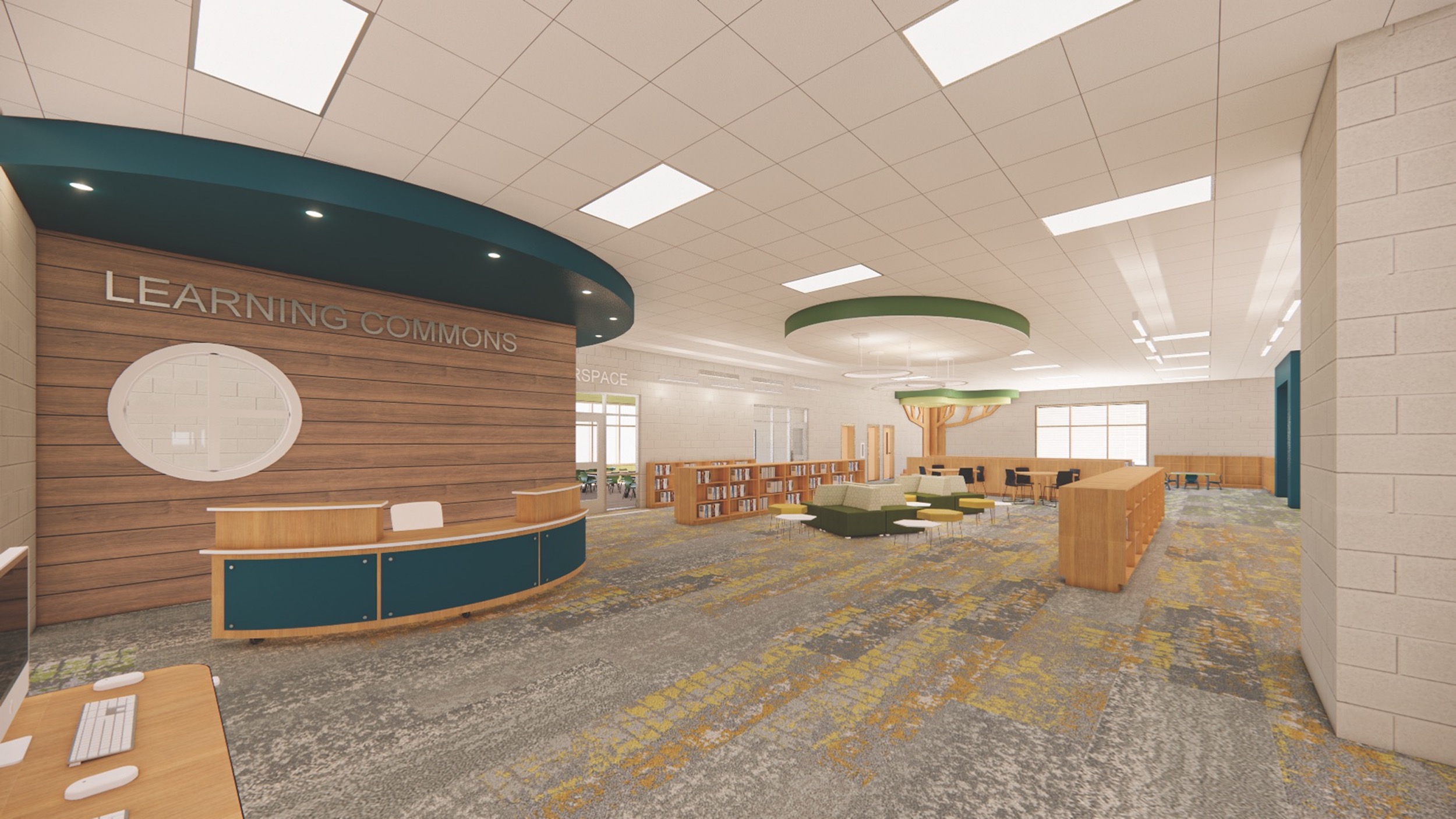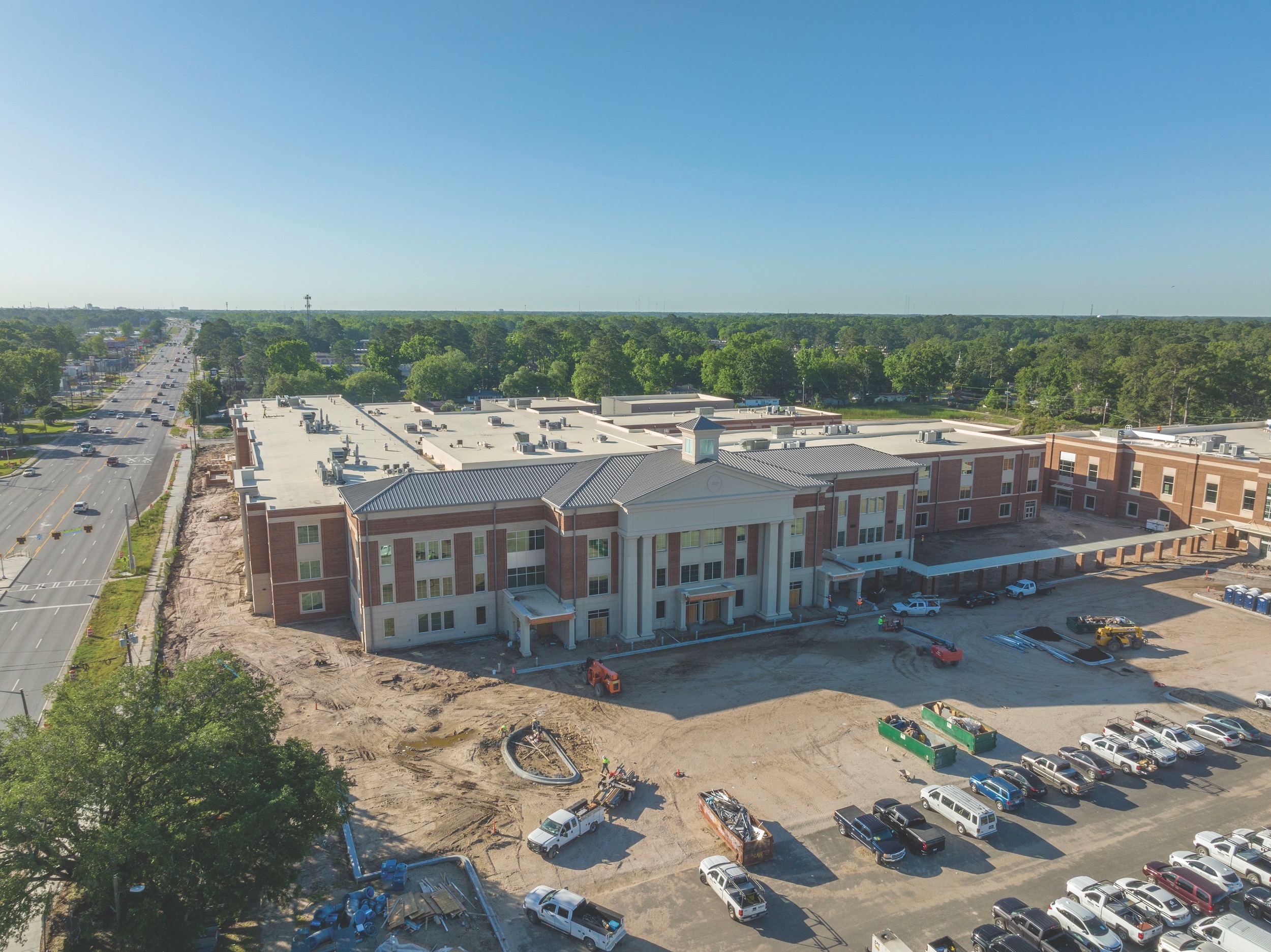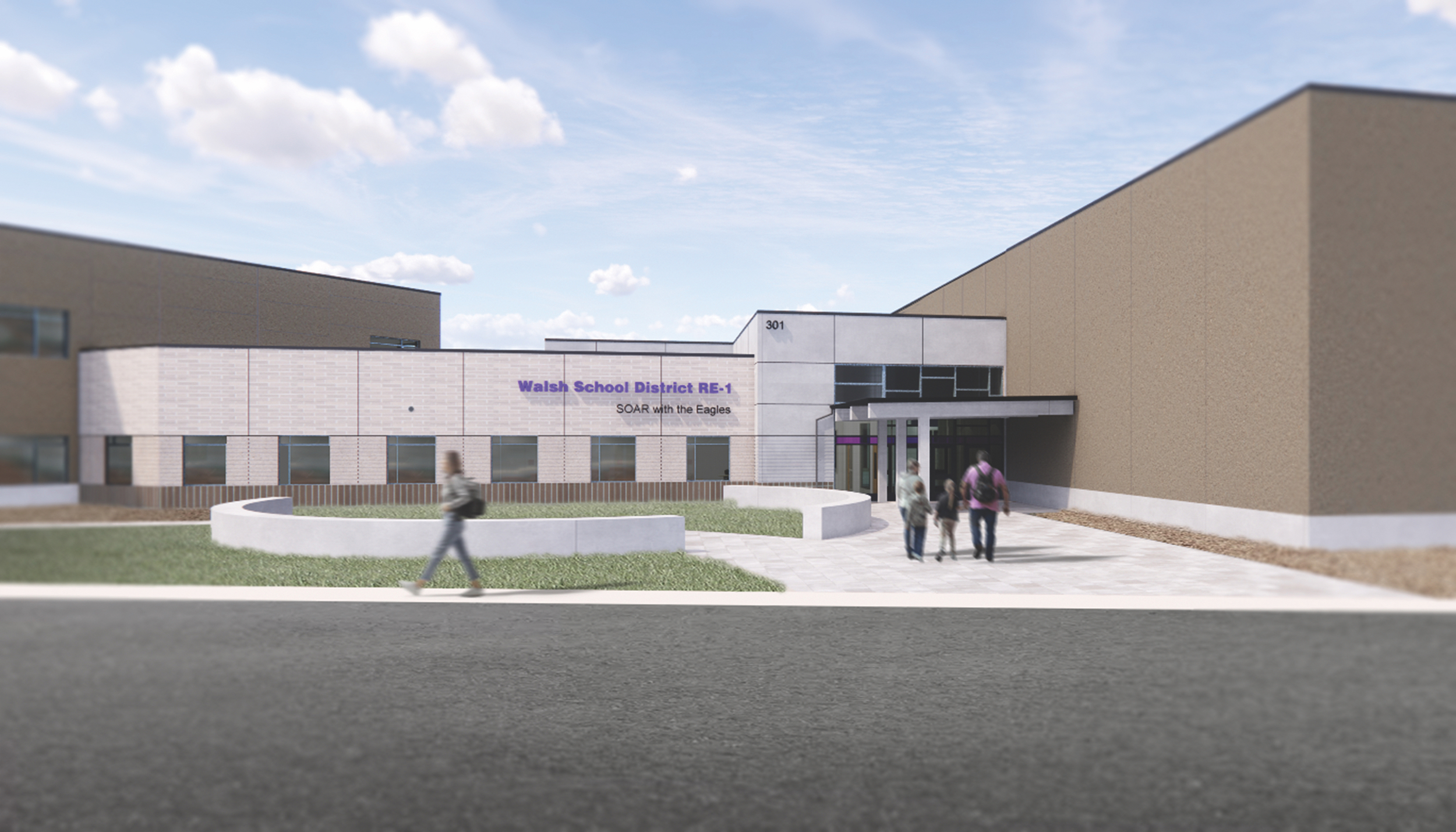In late March, Walsh School District in rural Colorado started construction on a 60,000-sf school that, when completed in the spring of 2024, will teach students in grades Pre-K through 12 under one roof.
In Georgia, the Savannah-Chatham County Public School System (SCCPSS) is wrapping up construction on a 410,000-sf K-12 multi-school project in Garden City, near Savannah, that will enroll about 2,400 students.
While corralling elementary, middle, and high school students in one building isn’t unheard of, it’s still more the exception than the rule, and controversial as news about bullying in schools has become more frequent. “If anything, more schools are separating grade levels,” observes Chris Greer, Henderson Engineers’ K-12 Education Practice Director.
A few years ago, JCJ Architecture designed a one-building K-12 school for a district in Rochester, N.Y. But, says Jim LaPosta, the firm’s Chief Architectural Officer, the prevailing single-building model remains K-8.
However, that could be changing. The general contractor Barton Malow has been working with the Kresge Foundation and the University of Michigan to build PK-16 schools in Detroit. (At least one is under construction, says Mike Stobak, the firm’s Vice President of its K-12 Group.)
The Savannah K-12 school is part of a larger trend toward school building consolidation, in Georgia and other states, asserts David Hamilton, Vice President and Regional Manager for Charles Perry Partners, the general contractor on the Garden City project, whose “all-in” cost is $135 million, according to Dr. Slade Helmly, SCCPSS’s project manager.
Phase 1 of this project, which will be completed this summer, includes two gyms, two cafeterias, and a common kitchen. The school will feature a digital media lab, career and technical education programs for aviation, logistics, and business, a two-story, 750-seat auditorium, and a parking lot with at least 660 spaces. Phase 2 went out for bid in May, says Helmly, and encompasses a fieldhouse and stadium, and campus police department. (The old police station had been on this site, as was Gross High School, both of which were demolished.)
A 50-kW solar array on the new building’s roof will supply one-third of the school’s energy needs.
Addressing security concerns in single-building K-12 schools
Vaughn Dierks, a Partner with Wold Architects & Engineers, which is the Project Architect on the Walsh School District’s PreK-12 school, says that having students of all grades in one building isn’t that big of a deal for this mountain community, where “the kids ride the same bus together, and the older kids look after the younger ones.”
Hamilton thinks that SCCPSS and LS3P Associates—which designed the Garden City school and hired the engineers and contractor for the building team—did a good job separating the lower and upper grades via glass partitions and access-control doors.
April Mundy and Lisa Pinyan, LS3P’s Project Architect and Senior Project Manager/Interior Designer, tell BD+C that their firm designed this campus as three buildings—a primary, middle, and high school—that “share a few common walls.” Administration and student services are strategically located in multiple locations throughout the building, which helps to delineate zones, supervision, and security.


ambitious project as reinforcing the local community. Graphics: LS3P Associates
The idea behind the single-building K-12 school, they explain, is rooted in three basic tenets:
• Improving the educational experience by allowing the administration to adjust classroom grade assignments as enrollment ebbs and flows each year. This environment should also enhance professional development and cross collaboration, and provide more varied learning to students;
• Sharing common core programs and spaces that include specialized arts and performance venues, career education, athletics, and food services; and
• Improving security and operations with centralized systems, so infrastructure can be more efficient by serving a larger student population. Each phase of the building’s design followed Crime Prevention Through Environmental Design (CPTED) principles.
Mundy and Pinyan add that by having the grades together, “we’re able to create a hub and city center for local families to drop off and pick up their children. The goal is for this school to be a catalyst to build a strong community.”
Will single-building K-12 schools become a niche?
This is SCCPSS’s largest project to date, as well as the largest school project undertaken by Charles Perry Partners. “There’s a huge difference between building a $30 million K-8 school and a $100 million K-12 school,” says Hamilton. “It’s a different level of construction.” He’s a big believer in superintendents owning their areas of responsibility, so on this project, his firm brought on board assistant supers with specialties in MEP, exteriors, and so forth. “It was like building a mini company.”
Hamilton says his firm hopes to parlay the Georgia K-12 multi-school building into more multi-school business. “We are definitely showcasing this project, because people want to work with builders that have been there, and have the T-shirt.”
Related Stories
| Aug 11, 2010
Special Recognition: Pioneering Efforts Continue Trade School Legacy
Worcester, Mass., is the birthplace of vocational education, beginning with the pioneering efforts of Milton P. Higgins, who opened the Worcester Trade School in 1908. The school's original facility served this central Massachusetts community for nearly 100 years until its state-of-the-art replacement opened in 2006 as the 1,500-student Worchester Technical High School.
| Aug 11, 2010
BIM school, green school: California's newest high-performance school
Nestled deep in the Napa Valley, the city of American Canyon is one of a number of new communities in Northern California that have experienced tremendous growth in the last five years. Located 42 miles northeast of San Francisco, American Canyon had a population of just over 9,000 in 2000; by 2008, that figure stood at 15,276, with 28% of the population under age 18.
| Aug 11, 2010
8 Tips for Converting Remnant Buildings Into Schools
Faced with overcrowded schools and ever-shrinking capital budgets, more and more school districts are turning to the existing building stock for their next school expansion project. Retail malls, big-box stores, warehouses, and even dingy old garages are being transformed into high-performance learning spaces, and at a fraction of the cost and time required to build classrooms from the ground up.
| Aug 11, 2010
Special Recognition: Kingswood School Bloomfield Hills, Mich.
Kingswood School is perhaps the best example of Eliel Saarinen's work in North America. Designed in 1930 by the Finnish-born architect, the building was inspired by Frank Lloyd Wright's Prairie Style, with wide overhanging hipped roofs, long horizontal bands of windows, decorative leaded glass doors, and asymmetrical massing of elements.
| Aug 11, 2010
Joint-Use Facilities Where Everybody Benefits
Shouldn’t major financial investments in new schools benefit both the students and the greater community? Conventional wisdom says yes, of course. That logic explains the growing interest in joint-use schools—innovative facilities designed with shared spaces that address the education needs of students and the community’s need for social, recreation, and civic spaces.
| Aug 11, 2010
Education's Big Upgrade
Forty-five percent of the country's elementary, middle, and high schools were built between 1950 and 1969 and will soon reach the end of their usefulness, according to the 2005–2008 K-12 School Market for Design & Construction Firms, published by ZweigWhite, a Massachusetts-based market-research firm.
| Aug 11, 2010
Burr Elementary School
In planning the Burr Elementary School in Fairfield, Conn., the school's building committee heeded the words of William Wordsworth: Come forth into the light of things, let nature be your teacher. They selected construction manager Turner Construction Company, New York, and the New York office of A/E firm Skidmore, Owings & Merrill to integrate nature on the heavily wooded 15.
| Aug 11, 2010
Bronze Award: Trenton Daylight/Twilight High School Trenton, N.J.
The story of the Trenton Daylight/Twilight High School is one of renewal and rebirth—both of the classic buildings that symbolize the city's past and the youth that represent its future. The $39 million, 101,000-sf urban infill project locates the high school—which serves recent dropouts and students who are at risk of dropping out—within three existing vacant buildings.
| Aug 11, 2010
New school designs don't go by the book
America needs more schools. Forty-five percent of the nation's elementary, middle, and high schools were built between 1950 and 1969, according market research firm ZweigWhite, Natick, Mass. Yet even as the stock of K-12 schools ages and declines, school enrollments continue to climb. The National Center for Education Statistics predicts that enrollment in public K-12 schools will keep rising...
| Aug 11, 2010
Bronze Award: Lincoln High School Tacoma, Wash.
Lincoln High School in Tacoma, Wash., was built in 1913 and spent nearly a century morphing into a patchwork of outdated and confusing additions. A few years ago, the Tacoma School District picked Lincoln High School, dubbed “Old Main,” to be the first high school in the district to be part of its newly launched Small Learning Communities program.







